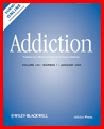
Chronic alcohol abuse contributes not only to an increased risk of health-related complications, but also to a premature mortality in adults. Myocardial dysfunction, including the development of a syndrome referred to as alcoholic cardiomyopathy, appears to be a major contributing factor. One mechanism to account for the pathogenesis of alcoholic cardiomyopathy involves alterations in protein expression secondary to an inhibition of protein synthesis. However, the full extent to which myocardial proteins are affected by chronic alcohol consumption remains unresolved.
The purpose of this study was to examine the effect of chronic alcohol consumption on the expression of cardiac proteins. Male rats were maintained for 16 weeks on a 40% ethanol-containing diet in which alcohol was provided both in drinking water and agar blocks. Control animals were pair-fed to consume the same caloric intake. Heart homogenates from control- and ethanol-fed rats were labeled with the cleavable isotope coded affinity tags (ICAT™). Following the reaction with the ICAT™ reagent, we applied one-dimensional gel electrophoresis with in-gel trypsin digestion of proteins and subsequent MALDI-TOF-TOF mass spectrometric techniques for identification of peptides. Differences in the expression of cardiac proteins from control- and ethanol-fed rats were determined by mass spectrometry approaches.
Initial proteomic analysis identified and quantified hundreds of cardiac proteins. Major decreases in the expression of specific myocardial proteins were observed. Proteins were grouped depending on their contribution to multiple activities of cardiac function and metabolism, including mitochondrial-, glycolytic-, myofibrillar-, membrane-associated, and plasma proteins. Another group contained identified proteins that could not be properly categorized under the aforementioned classification system.
Based on the changes in proteins, we speculate modulation of cardiac muscle protein expression represents a fundamental alteration induced by chronic alcohol consumption, consistent with changes in myocardial wall thickness measured under the same conditions.
Request Reprint E-Mail: tvary@psu.edu
____________________________________________________________

































